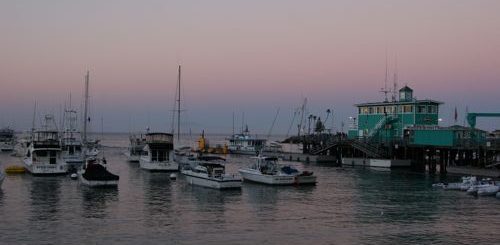{bucket list} Tracking Mountain Gorillas in Rwanda
A few years ago I had one of the most incredible travel experiences I have had so far – two days of tracking the mountain gorillas in Rwanda. I am probably not skilled enough as a writer to describe how moving and unbelievable the experience was, but I will try.

I’m not sure why it has taken me so long to write about this, but it might have something to do with the fact that I have hundreds of gorilla photos to wade through, and when they are this cute – it’s hard to choose which ones to share.

But I’m getting ahead of myself. How this trip came about is a story in and of itself. About three years ago, I was talking to an acquaintance and he mentioned that his brother had just returned from Rwanda. “Why Rwanda?” I asked. “Oh, he went to sit with the gorillas in the mountains, like Dian Fossey [from Gorillas in the Mist].” “YOU CAN DO THAT?” I replied. And he said “I guess so. Maybe I should have asked more questions.” Of course the trusty internet confirmed that YES, you can do this, and boy, once I knew about it, I just couldn’t get it out of my mind. And this was before I knew that the gorillas would be this cute or that Rwanda would be such a beautiful, interesting and welcoming country.

During that time, my husband and I had been talking about having kids, and I learned that you have to be at least 16 years old to see the gorillas. With some quick mental calculations, I realized that if I waited to have kids and let them all grow up to be at least 16 so we could all see gorillas together, it would be more than 20 years before we would have the chance. And the gorillas are endangered, so who knows? I half- jokingly told my husband that I refused to get pregnant until I had seen the gorillas in Rwanda. i made the joke enough times that he eventually called my bluff and asked me to show him my online research. Since he is a lover of both animals and adventures, it didn’t take much convincing and he agreed we should make it happen.
Fast forward about 9 months and we had spent a wondrous few weeks in Zanzibar and Tanzania. We arrived in Kigali by plane, where visitors typically spend one or two nights in before heading to Volcanoes National Park in the north of the country. After the relative calm of the clear blue waters of Zanzibar and the remote luxury of the Serengeti, Rwanda’s tumbledown capital city was an abrupt change.


Besides the gorillas, all I knew about Rwanda was that they had suffered a horrendous genocide in 1994 – and like most people, the bulk of my knowledge was gleaned from the movie Hotel Rwanda. In preparation for the trip, I read books about the genocide to learn more about it, including the excellent insider’s look at what happened on the ground, Shake Hands with the Devil, by former United Nations commander Romeo Dallaire. When our gorilla guide picked us up in Kigali, he strongly encouraged us to visit the national Genocide Museum before continuing on our journey. He pointed out that learning about the genocide is essential for any visitor to Rwanda, since it is so ingrained in everyone’s memory and because virtually everyone in the country was deeply affected by it. In this country of only around 10 million people, over 1 million were killed and 3 million displaced over just a few fateful months in 1994. It was a sobering and tear-stained visit, but the guide was definitely wise to make the recommendation, since the genocide is such an integral piece of life and recent history here.

Since then, Rwanda has repaired remarkably well, and is now relatively prosperous and stable. Most people have food and shelter and there is very little starvation or begging. The government has made smart alliances with foreign businesses that provide needed infrastructure work while providing the Rwandans with good jobs. Once on the road north, it takes about 4 or 5 hours by car to reach Volcanoes National Park, where the gorillas make their home. On the trip, the car winds through Rwanda’s emerald green hills. The steep hills grow coffee and tea for export, as well as providing subsistence farming for families.

Along the way you may see many people along the road carrying things on their heads. I loved seeing all the things people carried on their heads.





Arriving in the town of Ruhengeri, there are bustling markets and shops. Depending on where you are lodging, you may stay in Ruhengeri or nearby, or drive farther afield to a more far-flung hotel. We opted to stay at Virunga Safari Lodge, a wonderful small inn at the top of a mountain between two lakes.

After a long ride up a steep and bumpy gravel road, you are rewarded with a spectacular view of the mountain range all around. Luckily there are a few places to sit and have a beer so you can take some time with the vista.

The Virunga volcano range is at the crossroads of Rwanda’s border with Uganda and the Congo, and the only place in the world that mountain gorillas live. If you wish to visit in the dry season, the gorilla trek must be booked very far in advance, as there are only around 50 permits per day. The permits are very expensive as well – $500 per person for 1 hour with the gorillas. While I was skeptical about the value of this high price, my concerns melted away at first glimpse of the gorillas.

These are the gorillas, and this is the area, from the movie Gorillas in the Mist. Along with the eight families that tourists can visit, there are several other gorilla families that are reserved for study by the researchers at the Dian Fossey center. Despite the near decimation of the gorilla population in this century, thanks to the tourist dollars brought in to the park, a stable government and absence of war, and the attention from the Fossey center, the gorilla numbers are again climbing.

When the day of your gorilla trek arrives, you must wake up very early to meet at National Park headquarters. There, people are divided into groups of eight, with a guide and two trackers. You can indicate whether you prefer an easier or more challenging hike. The gorilla families move around but trackers head up the mountain early to find where they are. (Trackers are also used for anti-poaching measures.) Once the trackers have radioed the rough location of the gorilla families, you drive out to a starting point to begin the hike.
![]()
The national park has set up a system to hire ex-poachers as porters. You can hire the porters cheaply to carry your bag, jacket, and so forth along the hike. The porters are also indispensable on the trail when you hit deep mud, impassable chasms, and vine-choked trails. Machetes in hand, they slash away at the encroaching flora to open up a trail. The trackers usually carry guns – but not for the gorillas. Occasionally a herd of large buffalo can be found roaming the volcanoes, and the trackers use the gun to disperse the buffaloes if needed as they can be extremely dangerous. But that scenario is apparently pretty rare.
It’s impossible to predict what the hike will be like or where it may lead, as the gorillas move around the mountains constantly. On our first day of trekking, we hiked almost straight up the mountain, through a slippery, overgrown, fecund trail. Our first glimpses of the gorillas were incredibly exciting, but the gorillas were very active, so we had to keep moving around the slippery, steep slopes to catch up with them.




At one point the guide pointed behind me silently, with eyes wide, as he hadn’t realized that we had snuck up on a large black back (adult male!) As quietly as I could, I turned around and he was staring me right in the eyes. Exhilirating doesn’t even begin to describe the feeling.

The second day of trekking was a totally different experience. After a flat and mostly dry hike through some trees, we arrived at the site of a large gorilla family, and they were all together in close quarters and stayed that way, playing, grooming, and lounging, for the hour that we were allowed to spend with them. The huge male silverback mostly napped with his many female companions and the other adult males, while the babies and young ones played and got into some mischief.




I dragged my feet as we left the gorillas that day, as I knew it was pretty unlikely I would ever have the chance to have that experience again. Our guide cheered us up that afternoon by taking us into the market in Ruhengeri.

He helped us buy a whole bunch of school supplies and soccer balls for a local school in the town. We delivered the goods and got to meet some of the students and teachers.

So here it is, two years later, and I’m still remembering the time we had with the gorillas. I hesitate to be so dramatic or cheesy as to say it changed my life, but I think it really did.
In case you’re wondering, I kept my side of the bargain – once the malaria pills were out of my system, I got pregnant and we now have our very own little baby gorilla at home. But I still dream about sitting with those gorillas again one day, maybe even when my kids are old enough to come, too.

If you want to go: we arranged everything through Volcanoes Safaris, which I would highly recommend. They arrange gorilla permits and all lodging, food, and touring. We absolutely loved our guide and everything about the trip was smooth, safe, and with excellent service and accommodations throughout. You can fly to Kigali from Johannesburg or Nairobi. They have recently added some flights from Brussels and a few other locations as well. Since we were coming from a safari, the safari company we used, And Beyond (also highly recommended), arranged our flight on a small plane from the Serengeti directly into Kigali.
If you liked this post, you may also enjoy…
- Stone Town Market, Zanzibar
- Before the War, After the War: Beirut
- Magic, Madonnas, and Millenia in Matera, Italy






I loved reading about your trip. This has been on my bucket list as well. You have just renewed my determination to get there. Shake Hands With the Devil was one of the first books I read when my husband started working with the UN. Later on, I cried when I saw Dallaire carrying the Canadian flag into the arena. What a story. Thanks for a great post.
@Lora thank you so much for commenting! It really was amazing and the country was so welcoming and interesting. Please let me know if you have any other specific questions about planning and I’ll try to help. 🙂
Wow, what an amazing trip. I can’t even imagine. My mom is traveling to Africa this fall (not Rwanda though — Mozambique) and I can’t wait to hear about all the life changing things that she will get to see and experience.
@Sarah thanks for your comment! It was really great. I have heard Mozambique is also fantastic and that one is definitely on my list too.
<3 beautiful. Thank you Karen – I can feel what an amazing experience it was!
@Eliza thanks!
Ohh really nice post..The bucket list tracking mountain gorillas in
Rwanda is really superb for tourists interested in gorilla safari.